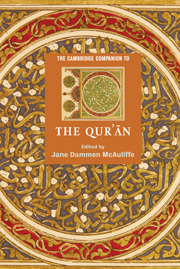Book contents
- Frontmatter
- Introduction
- Part I Formation of the Qur'ānic text
- 1 The historical context
- 2 Creation of a fixed text
- 3 Alternative accounts of the Qur'ān’s formation
- Part II Description and analysis
- Part III Transmission and dissemination
- Part IV Interpretations and intellectual traditions
- Part V Contemporary readings
- Qur'ān Citation Index
- General Index
3 - Alternative accounts of the Qur'ān’s formation
from Part I - Formation of the Qur'ānic text
Published online by Cambridge University Press: 28 March 2007
- Frontmatter
- Introduction
- Part I Formation of the Qur'ānic text
- 1 The historical context
- 2 Creation of a fixed text
- 3 Alternative accounts of the Qur'ān’s formation
- Part II Description and analysis
- Part III Transmission and dissemination
- Part IV Interpretations and intellectual traditions
- Part V Contemporary readings
- Qur'ān Citation Index
- General Index
Summary
Friedrich Schwally's revision of Theodor Nöldeke's Geschichte des Qorāns, parts one and two, published in 1909 and 1919 respectively, presented the current status of Western scholarship on the Qur'ān's formation at the beginning of the twentieth century. W. Montgomery Watt's revised edition of Richard Bell's Introduction to the Qur'ān, published in 1970, provided a new stock-taking of the then widely accepted wisdom on the topic. A comparison of the two works, however, reveals little development in the intervening half century as far as their main topics are concerned. Yet this interlude of relative scholarly calm contrasts sharply with the turbulent decades that followed. From the 1970s onwards several assertions about the origin and formation of the Qur'ān have been the object of detailed revision and the results of these studies more often than not have challenged the accepted wisdom. The year 1970 can thus be considered a watershed in the scholarly history of this research, and Watt's book can serve as a suitable point of reference for a sketch of the more recent developments. In the following, some of these alternative accounts will be introduced taking the primary issue which each of them tackles as a starting-point. The portrayal of each account focuses on its premises, methods and results.
- Type
- Chapter
- Information
- The Cambridge Companion to the Qur'ān , pp. 59 - 76Publisher: Cambridge University PressPrint publication year: 2006
- 5
- Cited by



